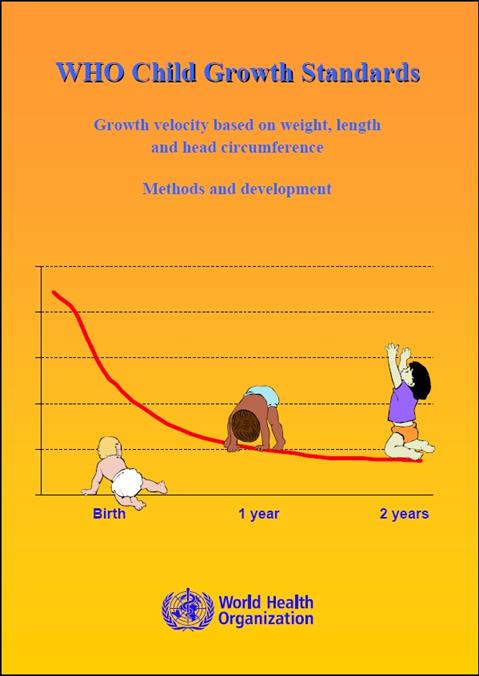WHO child growth standards: growth velocity based on weight, length and head circumference: methods and development

Overview
In 1993 the World Health Organization (WHO) undertook a comprehensive review of the uses and interpretation of anthropometric references. The review concluded that the NCHS/WHO growth reference, which had been recommended for international use since the late 1970s, did not adequately represent early childhood growth and that new growth curves were necessary. The World Health Assembly endorsed this recommendation in 1994. The WHO Multicentre Growth Reference Study (MGRS) was undertaken in response to that endorsement and implemented between 1997 and 2003 to generate new curves for assessing the growth and development of children the world over.
The MGRS collected primary growth data and related information from 8440 healthy breastfed infants and young children from diverse ethnic backgrounds and cultural settings (Brazil, Ghana, India, Norway, Oman and USA). A key component of the MGRS design was a longitudinal cohort of children who were examined in a sequence of 21 visits starting at birth and ending at 24 months of age. A principal rationale for the longitudinal component was to allow for the development of growth velocity standards.
The increments on which the velocity standards are based were calculated using the same longitudinal sample of 882 children and statistical approaches as those used in the construction of the attained growth standards. The velocity standards presented in this report provide a set of tools for monitoring the rapid and changing rate of growth in early childhood and can be used to assess children everywhere, regardless of ethnicity, socioeconomic status and type of feeding.
